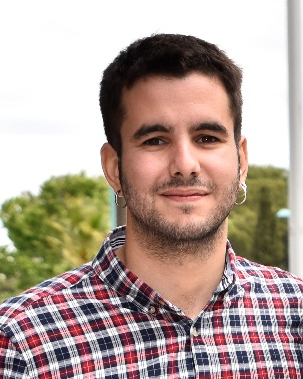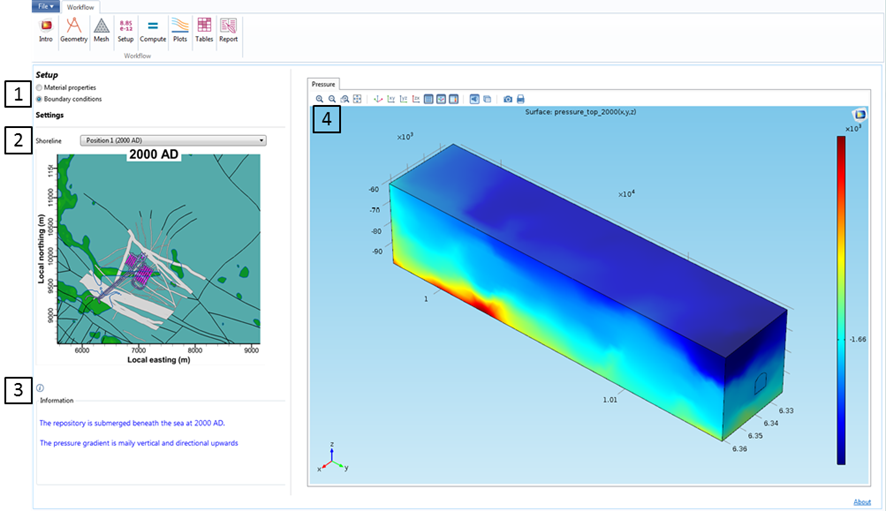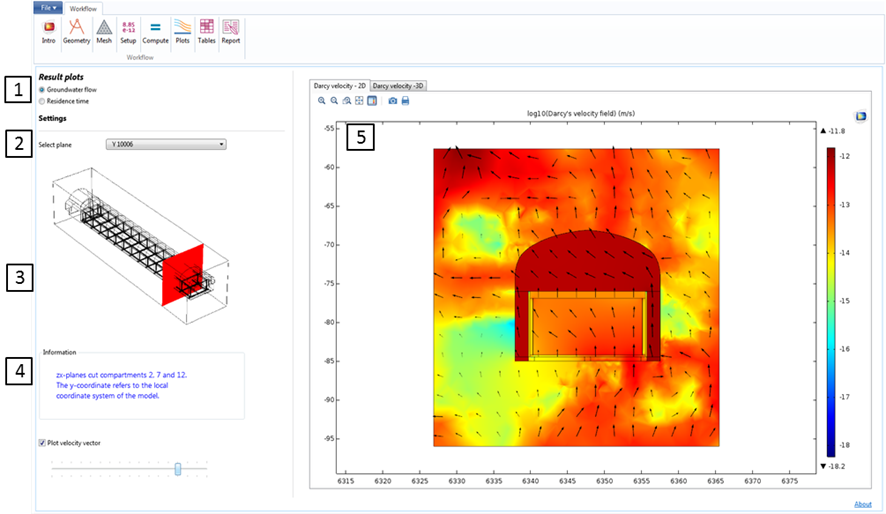- Published on
Comsol App for the evaluation of an engineered barrier system
- Authors
Author
- Name
- Diego Sampietromail

Introduction
Radioactive waste disposal systems typically comprise a series of barriers that aim at protecting the environment and human health. The presence of several barriers enhances confidence that the waste will be adequately contained. In deep geological disposal systems, the barriers include the natural geological barrier and the engineered barrier system (EBS).
The efficiency of the EBS and the geological barrier is often tested through complex numerical models. These models serve to evaluate the response of the barrier under different sensitivity scenarios. One important factor to be evaluated is the groundwater flow crossing the barriers under different scenarios, which often consist in changes in the hydraulic properties of the different materials or changes in the waste compartment location.
The present article shows an example of a COMSOL App set up to allow such sensitivity analyses. The model behind the app contains a hydrogeological groundwater flow model of a specific vault (1BMA) for intermediate level radioactive waste disposal operated by the Swedish nuclear waste management company (SKB).
Model Set-up
The Multiphysics model underlying the application simulates groundwater flow through a rock vault in the Swedish final repository for short-lived radioactive waste [1]. The vault geometry is shown in Figure 1.

The Darcy’s law and Solute Transport interfaces have been applied to calculate groundwater flow rates and residence times in the vault. The residence time is defined here as the spatial distribution of the mean groundwater age, taking into account advection, diffusion and dispersion processes. It is calculated by solving a partial differential equation proposed by Goode et al [2].
Above, is the water age (), is the Darcy velocity field (m/s), is the hydrodynamic dispersion tensor (m2/s), is the porosity, is the water density (kg/m3) and is a source term.
Application description
Figure 2 shows the ribbon at the top of the application graphical user interface. Clicking the buttons, from left to right, provides a workflow that guides the user through the application.

The user can change model inputs on the Setup page. This involves assigning values to the porosity, hydraulic conductivity and effective diffusivity of different materials and engineered structures.
The user can also select among predefined pressure fields to prescribe the boundary conditions for the groundwater flow (Figure 3). As an option, pressure boundary conditions can be imported from file.

After model setup the user can compute the groundwater flow and the residence time in the rock vault. Results can be analyzed through a set of predefined plots in 2D and 3D (Figure 4). Numerical values can be output in table exports. Formats are standardized such that quantitative simulation results can be used directly in connected modelling activities.

After simulation, modelling reports can be generated automatically, summarizing the model setup and results.
Perspective
The COMSOL Application Builder has been used to rework a coupled Multiphysics model in 3D into a ready-to-use simulation application. The application provides the opportunity for non-modelling experts and engineers to perform extended simulation trials and production runs. The accessibility of the application format furthermore facilitates review and quality control work associated with the model development process itself.
References
COMSOL, 2015. COMSOL Multiphysics 5.1. COMSOL AB, 2015.
Goode D J, 1996. Direct simulation of groundwater age. Water resources research, vol 32. N.12, pages 289-296.